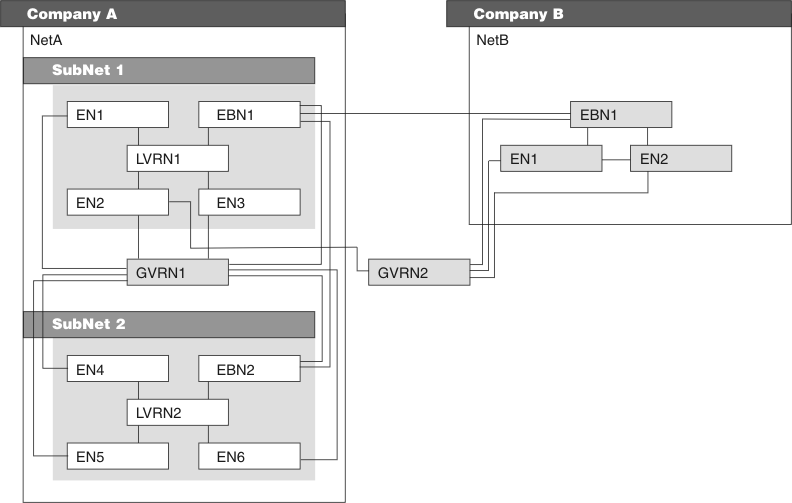 z/OS Communications Server: SNA Network Implementation Guide
z/OS Communications Server: SNA Network Implementation Guide
 z/OS Communications Server: SNA Network Implementation Guide
z/OS Communications Server: SNA Network Implementation Guide
|
Previous topic |
Next topic |
Contents |
Contact z/OS |
Library |
PDF
Defining local and global VRNs z/OS Communications Server: SNA Network Implementation Guide SC27-3672-01 |
|
|
You can define a local and global VRN to independently represent the connectivity within your own intranet, versus the connectivity over an extranet or the Internet. This enables you to provide direct access to specific systems for external vendors, while still giving internal systems direct access to all systems within your network. Figure 1 shows a network using multiple Enterprise Extender VRNs. Figure 1. Defining multiple EE VRNs
 In this figure, only the nodes in NetA SubNet 1 have access to the local VRN called LVRN1; and only the nodes in NetA SubNet 2 have access to LVRN2. These local VRNs can be used only to establish direct communication between nodes in the same subnetwork. But all of the nodes in both NetA SubNet 1 and NetA Subnet 2 have access to the global VRN called GVRN1. This allows every node in either of these two subnetworks to dynamically establish direct communication to any other node in either of these two subnetworks. GVRN2 is another global VRN which allows nodes in NetB to establish direct communication with only one end node (EN2) in NetA Subnet 1; sessions from NetB to any other node in NetA (SubNet 1 or SubNet 2) will include NetA.EBN1 as an intermediate node on the session path. 


|
 Copyright IBM Corporation 1990, 2014 Copyright IBM Corporation 1990, 2014 |